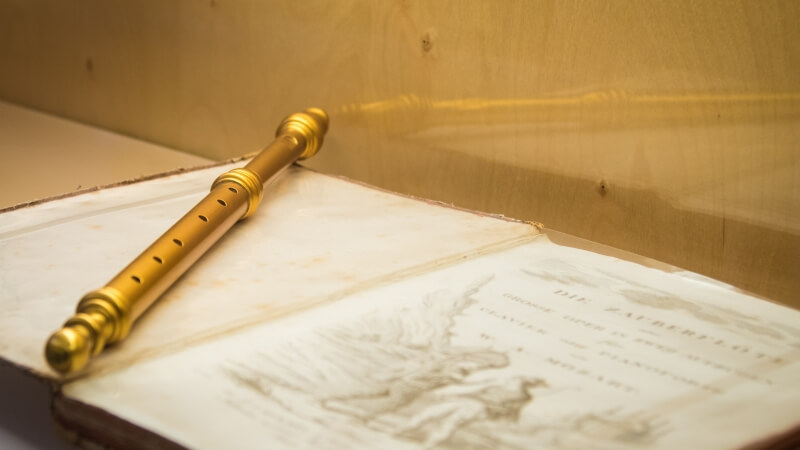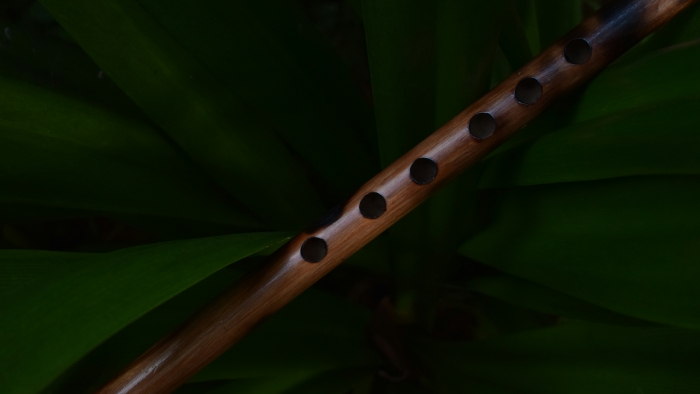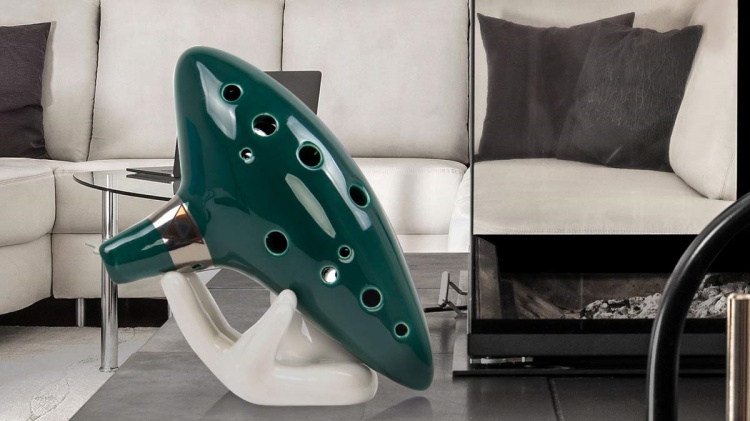
Exploring the Mystical Sounds: The World of the Ocarina
The ocarina is an ancient wind instrument known for its otherworldly and evocative sound. With a history spanning over 12,000 years across cultures worldwide, the

In the realm of musical instruments, the flute and the ocarina are two captivating players that often steal the spotlight. While they share some similarities, they also possess unique qualities that set them apart. Join us on a musical journey as we explore the enchanting world of the flute and the mystical allure of the ocarina.
The ocarina and the flute, both cherished for their unique characteristics, have left an indelible mark on the world of music. From the haunting melodies of the ocarina to the classical brilliance of the flute, these instruments have enchanted audiences for centuries.
In this comprehensive exploration, we’ll delve deeper into their origins, sounds, playing techniques, musical applications, and help you make an informed choice if you’re considering picking up one of these instruments.
Let’s start by delving into the origins and histories of the flute and the ocarina.
The Ocarina’s history is rich and diverse, with roots that trace back to ancient times. It has found its place in various cultures and musical traditions, making it a fascinating instrument with a unique backstory.
The ocarina’s journey through history has led it to become a cherished instrument with a captivating presence. From its humble beginnings as a simple clay vessel flute to its role in shaping the soundtracks of iconic video games, the ocarina’s evolution is a testament to its enduring appeal.
In ancient civilizations such as the Mayans and Aztecs, clay ocarinas were used in rituals and ceremonies. These early ocarinas were often shaped like animals or other symbolic forms, emphasizing their spiritual significance.
The flute, on the other hand, has a history deeply intertwined with classical music and orchestral compositions. Its evolution and significance in the world of music have made it an iconic instrument that stands the test of time.

From the classical era to modern compositions, the flute has left its mark on the world of music. Its journey takes us through the works of renowned composers like Mozart and Debussy, showcasing its versatility and ability to convey a wide range of emotions through its mellifluous tones.
The flute’s history also includes significant advancements in its design, such as the development of the Boehm system flute in the 19th century, which revolutionized its playability and expanded its range.
Now, let’s compare the sounds and playing techniques of the ocarina and the flute.
The ocarina produces a distinct and hauntingly beautiful sound. Its playing techniques involve finger placement and breath control to create melodies that resonate with enchantment. Let’s explore the unique qualities that define the ocarina’s sound.
The ocarina’s sound is characterized by its charmingly ethereal quality, evoking a sense of magic and wonder. Its haunting melodies have graced compositions like “The Legend of Zelda,” leaving an indelible mark on the world of gaming and music.
To create melodies on an ocarina, players cover and uncover specific holes with their fingers while controlling the airflow through the instrument. This precise fingerwork allows for a wide range of notes and expressive possibilities.
In contrast, the flute boasts a bright and melodious sound that has charmed audiences for centuries. Its playing techniques encompass embouchure and fingering techniques that bring forth a wide range of notes. Discover the magic behind the flute’s captivating sound.

The flute’s sound is a symphony of clarity and brilliance, enchanting listeners with its pure tones.
Its role in classical symphonies and concertos showcases its ability to convey intricate melodies and virtuosic passages, making it a favorite among composers and performers alike.
Playing the flute requires mastering the art of embouchure, which involves shaping the lips and controlling the airspeed to produce different notes. Additionally, precise finger placement on the flute’s keys is crucial for achieving the desired pitch and articulation.
Moving on, let’s discuss the roles of the ocarina and the flute in various musical styles and applications.
The ocarina has found its way into diverse genres, from cinematic soundtracks to folk and pop music. Its versatility allows it to create enchanting melodies that leave a lasting impression. Explore the musical versatility of the ocarina.
From haunting movie themes to catchy folk tunes, the ocarina’s melodies have a way of touching the soul.
It has even become a symbol of adventure and exploration, thanks to its prominent role in video game soundtracks, particularly in “The Legend of Zelda” series.
Ocarinas come in various sizes and tunings, allowing players to experiment with different sounds and styles.
Some ocarinas are tuned to specific scales, while others offer a chromatic range, making them suitable for a wide range of musical genres.
Conversely, the flute has been a cornerstone of classical music, orchestral arrangements, and even jazz. Its extensive range and tonal qualities have made it a beloved instrument in the world of music. Uncover the flute’s vast musical landscape.
From classical symphonies to jazzy improvisations, the flute’s versatility knows no bounds. Its ability to seamlessly transition between genres and evoke a wide range of emotions has cemented its place in the world of music.
In classical music, the flute often takes on solo roles, playing intricate melodies and virtuosic passages. It also plays a crucial role in orchestral settings, contributing to the overall texture and harmony of the music.
Finally, let’s guide you on how to choose the instrument that suits your musical aspirations.

Selecting between the ocarina and the flute can be a delightful dilemma. We’ll provide some insights and suggestions to help you make an informed choice based on your musical goals and preferences.
When choosing your musical companion, consider factors like your preferred musical style, your commitment to practice, and the unique allure of each instrument.
Remember that both the ocarina and the flute offer enchanting musical experiences, and your choice ultimately depends on the melodies you wish to create and the stories you want to tell through music.
In this musical showdown, we’ve explored the enchanting world of the ocarina and the timeless allure of the flute. Each instrument has its own unique history, sound, and applications.
Whether you’re drawn to the haunting melodies of the ocarina or the bright tones of the flute, both offer a captivating journey into the realm of music.
So, go ahead, embark on your musical adventure, and let the melodies flow. Whether you choose the mystical ocarina or the classical flute, the world of music awaits your harmonious contributions.
FAQ 1: Can I Play Both the Ocarina and the Flute as a Beginner Musician?
Answer: Absolutely! Both the ocarina and the flute can be learned by beginners. The ocarina’s simpler fingering system makes it an accessible choice, while the flute’s versatility and rich history make it a rewarding instrument to explore. Consider your musical preferences and start your journey with the one that resonates with you.
FAQ 2: Are There Different Types of Ocarinas and Flutes?
Answer: Yes, indeed! Ocarinas come in various shapes and sizes, each offering a unique tonal range. Flutes, too, have variations such as the concert flute, piccolo, and alto flute. Exploring different types allows you to discover the nuances of sound and musical possibilities.
FAQ 3: Which Instrument is More Suitable for Classical Music?
Answer: The flute has a strong presence in classical music, often featured in orchestral and chamber settings. Its ability to produce a wide range of notes and expressiveness makes it a top choice for classical musicians. However, some ocarinists have adapted the instrument for classical pieces, showcasing its versatility.
FAQ 4: Can I Play Popular Songs on the Ocarina or the Flute?
Answer: Certainly! Both instruments can be used to play popular songs. The ocarina’s sweet, melodic tones make it ideal for recreating themes from movies and video games. The flute’s versatility allows it to cover a wide range of genres, including pop, jazz, and contemporary music.
FAQ 5: Which Instrument Is Easier to Maintain?
Answer: Maintenance varies for both instruments. Ocarinas made of ceramic or plastic are relatively low-maintenance, requiring occasional cleaning. Flutes, being metal or woodwind instruments, require more care, including cleaning and occasional visits to a technician for adjustments. Choose based on your willingness to commit to maintenance routines.


The ocarina is an ancient wind instrument known for its otherworldly and evocative sound. With a history spanning over 12,000 years across cultures worldwide, the

When it comes to taking care of your musical instruments, ocarina requires special attention, especially in terms of disinfection. Whether you’re a professional musician or

When it comes to preserving the charm and sound of your ocarina, storage is key. Just like a treasured book or a fine wine, your

The world of music is filled with diverse and captivating instruments, and among them, the ceramic ocarina stands as a unique and charming creation. With

The ocarina is an ancient wind instrument known for its otherworldly and evocative sound. With a history spanning over 12,000 years across cultures worldwide, the

When it comes to taking care of your musical instruments, ocarina requires special attention, especially in terms of disinfection. Whether you’re a professional musician or

When it comes to preserving the charm and sound of your ocarina, storage is key. Just like a treasured book or a fine wine, your

The world of music is filled with diverse and captivating instruments, and among them, the ceramic ocarina stands as a unique and charming creation. With
Copyright © 2024 echofluteocarinas. All Rights Reserved.